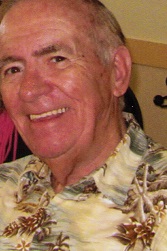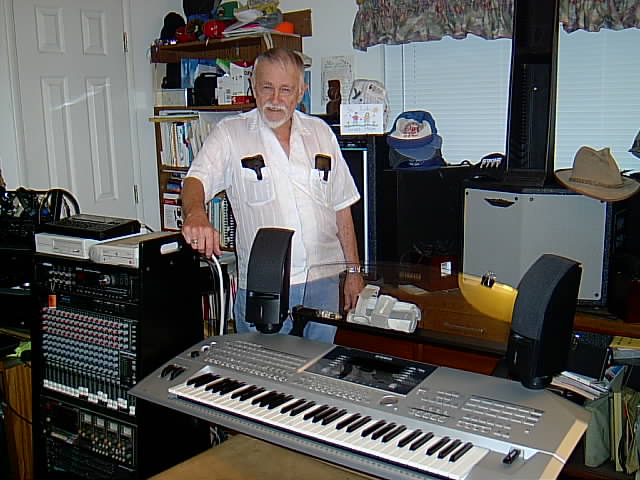 |
 |
 |
 |
 |
 |
#55374 - 01/13/05 05:08 AM
 The Music Played . . . . .
The Music Played . . . . .
|

Member
Registered: 01/05/05
Posts: 119
Loc: Brisbane, Queensland, Australi...
|
Dear All,
I have recently listened to a lot of music posted by some members, and come to the conclusions that many have put in a great deal of effort and love into their pieces of music. Inevitably, there are people who can play and sequence better than others. I would like to convey that none of the contributors needs to feel inferior because no matter what the level of ability one possesses, the intention, enthusiasm and sharing often count much more than sheer technicality and flawless brilliance. I do appreciate all of your musical pieces, which are diverse, lovely, effective and entertaining.
Some, if not all of the pieces may benefit from being reworked to gel seamlessly with memorable, unusual or unique introductions and endings. The start and end of a song can be a very powerful signature, and are the first and last traces of audible sounds and emotions for your audience. Many submissions may also benefit from having one or more clear climaxes as a way to punctuate or emphasise the narrative, articulate the form and structure of each song, and elevate the emotional state(s) of the listener to high intensities lasting well beyond the duration of a song. I am not saying that every song must have climax(es). Restraint, like silence, has its uses.
The melody of some pieces sounds a bit too loud to the point of over-dominating and obscuring the accompaniment, which I prefer to be more pronounced. On a related point, since we know the melody very well, what often make a new statement in, contribute to the character of, and/or impart extra dimensions to, a song, are the counter-melodies, accompaniments and harmonies, all of which can give the song a new twist or a new lease of life.
Getting more specific, most of William Bill Forest and Frank Bez's music, along with some of Joan Banfield such as "Shenendoah" and "Thoroughly Modern Millie", do stand out from the rest, in my opinion. The person playing "This Masquerade" is also highly commended for his/her effort. The piece is very well balanced, and has a good range of instruments playing the melody. It would be even better had there been a passage in complete improvisation. For aficionados of the big band, "More Blue Jazz" by Bebop is very cool and suave. Heather Cox shares her passion with gusto on the PR-54 digital ensemble. Larry Hawk likes his piano parts and Fred Green his organs, and they both indulged themselves doing a fine job to each of their chosen pieces. "For Once in My Life" tricked me into a false expectation, for it started most captivatingly in the style of a contemporary dance exotica but soon plunged itself into a different style whose origins lie in Swing and Jazz. I really got a dose of anachronism, and wondered where the former had gone and wanted it to continue but it never returned.
I admire Bez's rendition of "Round Midnight". Typically, his Intro and Ending are very distinctive and excellent, even impressive at times, as is the Intro of "Nobody Does It Better". However, in the latter, a song for James Bond 007, the syncopated funky accompaniment has been rather tricky to play in time with. I am not entirely sure of the effectiveness of the resulting timbral combination and texture, as well as the use of piano, plucked instrument(s) and later an organ (somewhat loud) to carry the melody. Having said that, I would like to congratulate Bez on his very good use of dramatic contrasts and sectional changes in many of his pieces.
Kind Regards,
KHAI
[This message has been edited by Khai (edited 01-13-2005).]
_________________________
Khai
|
|
Top
|
|
|
|
|
 |
 |
 |
 |
 |
 |
 |
 |
 |
 |
 |
 |
#55375 - 01/13/05 07:50 AM
 Re: The Music Played . . . . .
Re: The Music Played . . . . .
|

Senior Member

Registered: 09/21/02
Posts: 5548
Loc: Port Charlotte,FL,USA
|
Hi Khai
As a newcomer to our forum,with obvious credentials, I think it is great you took time to listen to the music submitted by our talented musicians. Hopefully,this will spark a resurgance of activity.
In other posts I see alot of technical prowess. Much appreciated. By me at least
Bernie
_________________________
pa4X 76 ,SX900, Hammond SK1, Ketron SD40,Ketron Event X Centerpoint Space Station, Bose compact
|
|
Top
|
|
|
|
|
 |
 |
 |
 |
 |
 |
 |
 |
 |
 |
 |
 |
#55383 - 01/17/05 05:23 PM
 Re: The Music Played . . . . .
Re: The Music Played . . . . .
|

Member
Registered: 01/05/05
Posts: 119
Loc: Brisbane, Queensland, Australi...
|
Dear Bill Norrie,
Hi! I finally caught up with some sleep after having only two hours the day before. Thank you for sending me a zip file of your version of "This Masquerade". I have done a comparison between your version and the one I had been listening to. I am pleased to say that they are a perfect match (literally identical twins), and therefore I must announce that you fit the bill (excuse the pun) as the mysterious person, the subject of my quest for a song-arranger identication.
I made further observations as follows. Four panel memories are used more or less in a cyclic fashion to furnish the change of solo instrument(s) in the Right 1 and/or Right 2 parts:
(1) Toy Piano & Ocarina
(2) Chiff Flute
(3) New EP Routes
(4) Symphonic Strings & Girls Doos
The left part is consistently Tremolo E Piano.
Your arrangement has a good sense of economy, and strikes a fine balance between unity and variety. Well done!
In terms of sound, the combination of Toy Piano & Ocarina is very effective and refreshing. I am glad that you avoided the less inspired or more common choice of piano or electric piano.
In the interest of saving time and getting the answers from the horse's mouth, I'd be interested to know whether:
(1) You played everything live.
(2) You entered the chord progression into the sequencer, or actually played in the Left part with the Auto Play Chord turned on.
(3) You activated the Panel Memory manually or automatically through the Music Style Arranger mode.
Most, if not all, of the versions of the song that I have come across are in either C minor or F minor. I notice that your version is transposed to Bb and you played in the key of A minor over that transposition, which later goes up a semitone during a repeat of the verse and returns to Bb in the chorus. A nice touch of modulation here! Is that your original idea or is it already in the original version of the song?
Khai
[This message has been edited by Khai (edited 01-17-2005).]
_________________________
Khai
|
|
Top
|
|
|
|
|
 |
 |
 |
 |
 |
 |
 |
 |
 |
 |
 |
 |
#55385 - 01/18/05 08:51 AM
 Re: The Music Played . . . . .
Re: The Music Played . . . . .
|

Senior Member

Registered: 01/02/00
Posts: 3781
Loc: San Jose, California
|
Originally posted by Bill Norrie:
In answer to your questions :
1. With the exception of the 'Vibraslap' sound, which was inserted using 'Step Record', everything was played 'Live' using the Easy Record method.
2. Left hand played live using Auto Play Chord.
3. All Panel Memory changes were carried out using a 4 bank footswitch.
As far as key signatures are concerned, I generally just choose a key which sounds right to my ear, for the particular mix of sounds which I have chosen for the song. The only version of this song which I have heard, is a recording by 'The Carpenters', which I have in my LP collection. Their version is in F minor.
I chose to play the song in A minor because having limited keyboard skills, I find this an easy key in which to play - particularly since I play everything by ear. I then used the Transpose function to move the pitch a little lower, effectively moving the key to G minor.
This guy Willum (ORB), who is one of our finest keyboard players still likes to insist he is not a keyboard player but in fact is a drummer. Now if you can believe that, I have a nice shinny Golden Bridge for sale real cheap  Bebop
_________________________
BEBOP
|
|
Top
|
|
|
|
|
 |
 |
 |
 |
 |
 |
 |
 |
 |
 |
 |
 |
#55390 - 01/19/05 01:27 AM
 Re: The Music Played . . . . .
Re: The Music Played . . . . .
|

Member
Registered: 01/05/05
Posts: 119
Loc: Brisbane, Queensland, Australi...
|
Originally posted by Phil Lynch:
Hi Bill.
I am struggling with a Pregnant 5th. Any help!
The MP3 recording of Old Cape Cod, You kindly sent me!
I enjoyed it; you did not say you played by ear, that makes the playing more
Enjoyable. I can, most of the time, detect if a tune is played by ear. Some chords
Donít quite sound right. You fooled me old son. I tried eating
Spaghetti with drum sticks, Difficult. See you soon.
Joe.
Phil, you do have a wicked sense of humour, at times. Bill, I prefer my drum sticks skinless. There is no hurry to pile up more around my love handles. For sheer size and force, go for those of the flightless emu down under. [This message has been edited by Khai (edited 01-19-2005).]
_________________________
Khai
|
|
Top
|
|
|
|
|
 |
 |
 |
 |
 |
 |
 |
 |
 |
 |
 |
 |
#55391 - 01/19/05 05:33 AM
 Re: The Music Played . . . . .
Re: The Music Played . . . . .
|

Senior Member

Registered: 01/16/02
Posts: 2330
Loc: North Yorkshire UK
|
With reference to : 'All Panel Memory changes were carried out using a 4 bank footswitch.'
The KN7000 has a facility for connection of 2 individual footswitches, via 1/4 inch jack sockets and a foot controller module which has 4 footswitches, via an 8 pin DIN socket.
These switches can be configured within the KN7000 operating system, to trigger a large number of functions such as Panel Memory Increment/Decrement, Rhythm Start/Stop, Intro/Ending, Fill-Ins, Sustain On/Off, Glide, Technichord On/Off, Rotary Tremelo Fast/Slow (for some Organ sounds) etc.
The particular functions assigned by the user to the footswitches, can be saved within the KN memory and combined with 'Song' data, when saved to SD card or disc. The option to save footswitch settings should be enabled, in the Panel Memory 'Expand' mode.
Using the footswitches to change the configuration of the keyboard, during live performance, means that you do not have to take your hands away from the playing keys, to change parameters.
I use both the individual footswitches and the bank of 4 module and normally have them set up as follows :
Individual
Footswitch 1 : Start/Stop
Footswitch 2 : Intro/Ending 2
4 Switch Module
Switch 1 : Fade Out
Switch 2 : Panel Memory Decrement
Switch 3 : Panel Memory Increment
Switch 4 : Technichord On/Off
------------------
Willum
_________________________
Willum
After silence, that which comes nearest to expressing the inexpressible is Music.
Aldous Huxley
( especially when the music is played on a KN7000....)
|
|
Top
|
|
|
|
|
 |
 |
 |
 |
 |
 |
|
|

